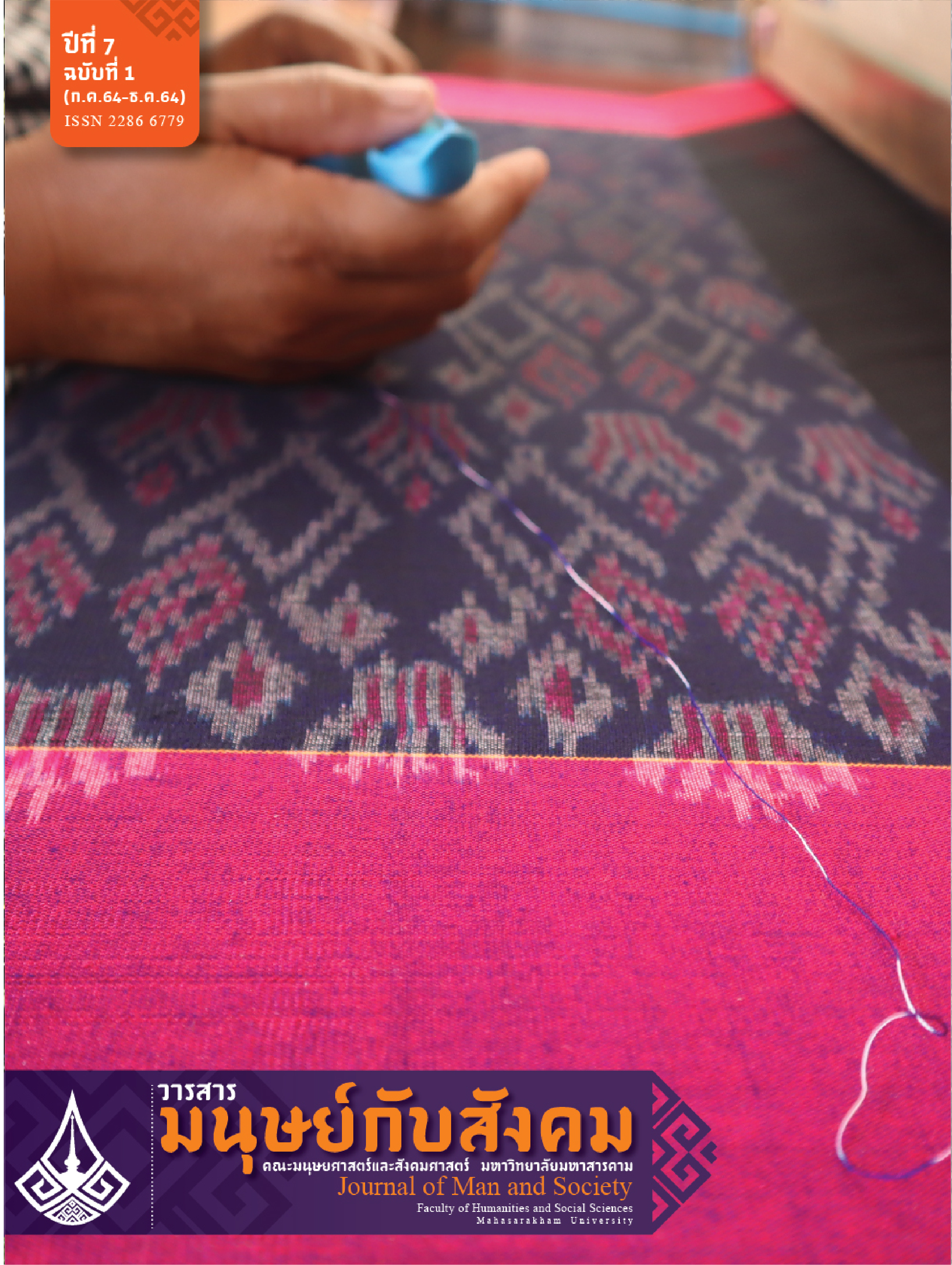Feminism Terms of Tale Literary Work “Phra Roth Meri” In Thai Version Feminism Terms of Tale Literary Work “Phra Roth Meri” In Thai Version
Main Article Content
Abstract
This research paper aims to study feminism in terms of tale literary work “Phra Roth Meri” in the Thai version. By investigating the collection of the tale literary work about five stories 13 rhymes, such as 1) 01rhyme of Roth Sencha Dok, 2) 01 rhyme of Kay Khab Mei in Phra Roth Meri story, 3) 01rhyme of Phra Roth Kham Klorn, 4) 03 rhymes of Phra Roth Nirat, and 5) 07 rhymes of drama articles in Phra Roth story, which the Fine Arts Department has been derived from the original Thai book and published in 2009.
This research demonstrated that feminism terms of tale literary work "Phra Roth Meri" have divided into two types: the direct meaning of feminism terms and indirect meaning of feminism terms. The direct meanings of feminism terms consist of two characteristics: a single feminism term and mixed feminism terms. In contrast, the indirect meaning of feminism terms is linked to power and nature. These show that the development of feminism terms of tale literary work "Phra Roth Meri" in the Thai version is the ability of the author to use a variety of feminism terms to make the language perfect, which represents beauty, behavior, role, duty, and status of womanhood in tale literary work. In addition, understanding the meaning of feminism terms associated with nature and power is considered linked to humans and nature, such as the naming feminism associated with lotus flowers, which represents the traditional notion that "lotus" is a symbol of femininity like beauty, purity.
Article Details
เนื้อหาและข้อมูลที่ตีพิมพ์ลงในวารสารมนุษย์กับสังคม ถือเป็นข้อคิดเห็นและความรับผิดชอบโดยตรงของผู้เขียนซึ่งกองบรรณาธิการวารสารไม่จำเป็นต้องเห็นด้วยหรือร่วมรับผิดชอบใดๆ
บทความ ข้อมูล เนื้อหา รูปภาพ ฯลฯ ที่ได้รับการตีพิมพ์ในวารสารมนุษย์กับสังคม ถือเป็นลิขสิทธิ์ของวารสาร หากบุคคลหรือหน่วยงานใดต้องการนำทั้งหมดหรือส่วนหนึ่งส่วนใดไปเผยแพร่ต่อต้องอ้างอิงวาสาร
References
กรฏา บุญวิชัย. (2560). พระรถเมรี: การศึกษาบทบาทหน้าที่ของชาดกถิ่นภาคใต้. สำนักวรรณกรรมและประวัติศาสตร์
กรมศิลปากร. (2552). ประชุมเรื่องพระรถเมรี. กรุงเทพฯ: สำนักวรรณกรรมและประวัติศาสตร์.
กรทรวงศึกษาธิการ. (2555).บรรทัดฐานภาษาไทย.เล่ม1.กรุงเทพฯ:สถาบันภาษาไทย สำนักวิชาการและมาตรฐานการศึกษา สำนักงานคณะกรรมการการศึกษาขั้นพื้นฐาน.
______________. (2555).บรรทัดฐานภาษาไทย.เล่ม2.กรุงเทพฯ:สถาบันภาษาไทย สำนักวิชาการและมาตรฐานการศึกษา สำนักงานคณะกรรมการการศึกษาขั้นพื้นฐาน.
จันทิมา อังคพญิชกิจ. (2561). การวิเคราะห์ข้อความ. พิมพ์ครั้งที่ 2. กรุงเทพฯ: มหาวิทยาลัยธรรมศาสตร์.
นันทพร พวงแก้ว. (2527). การศึกษาเชิงเปรียบเทียบเรื่อง พระรถเมรี-เมรีฉบับต่าง ๆ. ปริญญานิพนธ์อักษรศาสตรมหาบัณฑิต ภาควิชาภาษาไทย จุฬาลงกรณ์มหาวิทยาลัย.
นันทนา วงษ์ไทย. (2561). อรรถศาสตร์ปริชานเบื้องต้น. กรุงเทพฯ: เวิร์ล ออล พริ๊นท์.
ปริศนา พิมดี. (2547). คำเรียกผู้หญิงในวรรณคดีไทยสมัยอยุธยา. วิทยานิพนธ์ปริญญาอักษรศาสตรมหาบัณฑิต สาขาวิชาภาษาไทย มหาวิทยาลัยศิลปากร.
ปลิดา ผลประดับเพ็ชร์. (2561).หลักภาษาไทย. ภาควิชาภาษาไทย คณะมนุษยศาสตร์และสังคมศาสตร์ มหาวิทยาลัยราชภัฏบุรีรัมย์.
ราชบัณฑิตยสถาน. (2542). พจนานุกรม ฉบับราชบัณฑิตสถาน พ.ศ. 2542. กรุงเทพฯ: ราชบัณฑิตยสถาน.
ศิริพร ภักดีผาสุข. (2561). ความสัมพันธ์ระหว่างภาษากับอัตลักษณ์และแนวทางการนำมาศึกษาภาษาไทย. กรุงเทพฯ: จุฬาลงกรณ์มหาวิทยาลัย.
โศภิษฐ์ สุ่มมาตย์. (2556). ผู้หญิงละธรรมชาติในนวนิยายของถ่ายเถา สุจริตกุล: ทฤษฎีสตรีนิยมเชิงนิเวศ. วิทยานิพนธ์ศิลปศาสตรมหาบัณฑิต มหาวิทยาลัยขอนแก่น.
สุจิตต์ วงษ์เทศ. (2549). สุวรรณภูมิต้นกระแสประวัติศาสตร์ไทย. กรุงเทพฯ: มติชน.
สุภา อังกุระวรานนท์. (2527). การศึกษาความหมายแฝงของคำว่า “ผู้หญิง” จากความเปรียบในบทเพลงไทยสากล. ปริญญาอักษรศาสตรมหาบัณฑิต ภาควิชาภาษาศาสตร์ จุฬาลงกรณ์มหาวิทยาลัย.
อุไรศรี วรศะริน. (2553). ร่องรอยภาษาเขมรในภาษาไทย.ครั้งที่.ภาควิชาภาษาตะวันออก คณะโยราณคดี มหาวิทายาลัยศิลปกร.


